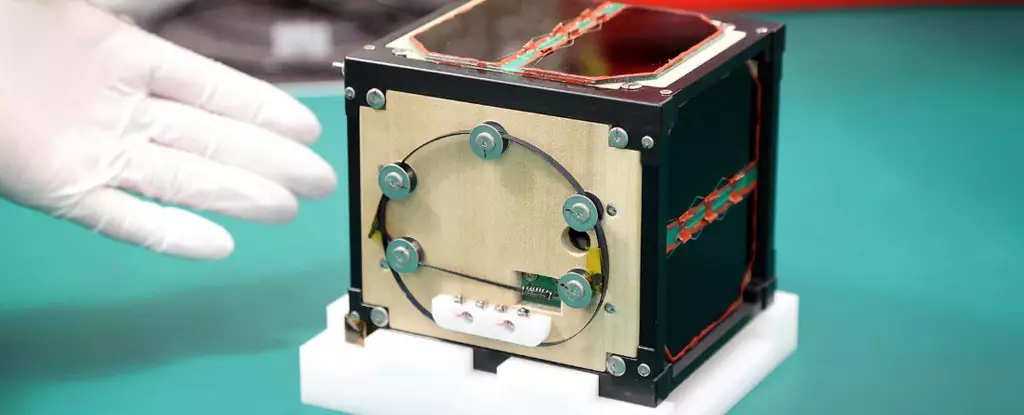The recent launch of the world’s first wooden satellite, known as LignoSat, aboard a SpaceX rocket marks a significant milestone in the field of aerospace engineering. This groundbreaking development, funded and supported by Japanese researchers from Kyoto University, signifies an increasing shift towards the utilization of sustainable materials in space technology. As environmental concerns continue to escalate, initiatives like LignoSat demonstrate the tangible application of eco-friendly alternatives in the high-tech realm of satellite design.
Traditional metal satellites pose an environmental challenge, especially when they re-enter the Earth’s atmosphere and break apart, potentially releasing harmful metal particles into the environment. Such particles can wreak havoc on both terrestrial ecosystems and the vast array of communication systems that rely on satellite functionality. The LignoSat project, thus, not only seeks to address these issues but also aims to explore the broader implications of biodegradable technology in space exploration.
LignoSat is designed as a compact, box-like structure with each side measuring approximately 10 centimeters (about four inches). This petite satellite was launched from NASA’s Kennedy Space Center in Florida as part of a resupply mission to the International Space Station (ISS). Developed in collaboration with the Japan Aerospace Exploration Agency (JAXA), the satellite is housed in a specially prepared container that ensures its safe transport and functioning in outer space. According to project representatives, LignoSat successfully reached its orbital destination, with plans to release it into space for experimental purposes in about a month.
The primary objective of LignoSat is to assess the endurance and performance of wooden materials under the extreme conditions of space. Monitoring will focus on its ability to withstand significant temperature fluctuations and stress over time. Researchers expect to receive data that will enable them to evaluate the satellite’s structural integrity and determine whether wooden construction can be a viable alternative for future satellites. Takao Doi, an astronaut and esteemed professor at Kyoto University, has emphasized the potential for non-metal satellites to become a standard in the industry, suggesting that LignoSat could pave the way for more sustainable practices in aerospace engineering.
The significance of this mission transcends mere novelty; it represents a pioneering approach to rethinking satellite design and operation. If successful, this could lead to the development of even more advanced, sustainable technologies that prioritize environmental preservation while fulfilling critical functions in space. As the world becomes increasingly focused on sustainable practices, initiatives like LignoSat demonstrate the power of innovation in addressing the challenges posed by space debris and material waste. The insights gained from this mission could transform how we approach satellite design and management, ultimately contributing to a cleaner and more sustainable future for space exploration.

